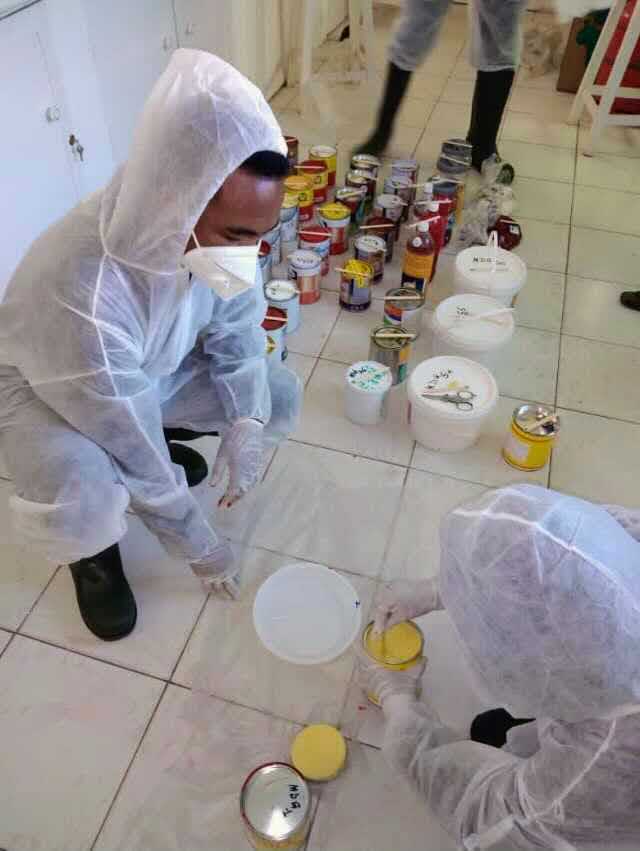Boost Your Safety And Security Methods with Expert Mycotoxin testing Services
Wiki Article
Just How Mycotoxin Screening Helps Avoid Contamination and Secure Food Products

Mycotoxin screening is a vital practice in the food market, serving as a frontline protection versus contamination by damaging contaminants produced by molds. With the application of innovative strategies like High-Performance Liquid Chromatography (HPLC) and Fluid Chromatography-Mass Spectrometry (LC-MS), food producers can precisely detect and quantify mycotoxin levels in agricultural products.
Comprehending Mycotoxins
Understanding mycotoxins begins with acknowledging that they are harmful additional metabolites created by specific molds, which can pollute farming items. These metabolites are not important for the growth or reproduction of the fungis yet can have extreme effects for animal and human wellness. Mycotoxins are generally found in staple crops such as corn, wheat, barley, and nuts, where they can proliferate under specific problems of dampness and temperature level.
There are a number of sorts of mycotoxins, each produced by different fungal types. Aflatoxins, created by Aspergillus species, are among one of the most well-known, understood for their carcinogenic residential properties. One more significant group includes ochratoxins, generated by Aspergillus and Penicillium varieties, which have nephrotoxic impacts. Fusarium species generate fumonisins and trichothecenes, both of which are associated with numerous severe and chronic health issues.

Risks of Mycotoxin Contamination
The risks of mycotoxin contamination are diverse, posturing considerable threats to both food safety and security and public health and wellness. Mycotoxins, toxic substances produced by specific types of fungis, can infect a vast variety of farming items consisting of grains, nuts, flavors, dried out fruits, and coffee.
Economic effects are an additional major problem. Polluted plants can lead to significant financial losses for farmers and food manufacturers due to decreased returns and the need for expensive purification procedures. International profession can be considerably impeded as nations apply strict mycotoxin guidelines to protect their populaces, leading to denied deliveries and strained profession relations.
Ecological aspects such as environment change worsen the danger of mycotoxin contamination. Variants in temperature level and humidity can create beneficial conditions for fungal growth, boosting the chance of contamination events. Hence, understanding and reducing these dangers are vital for ensuring the safety and integrity of global food supplies.
Methods of Mycotoxin Evaluating
Accurately identifying mycotoxin contamination in agricultural products is important for protecting public health and maintaining food safety standards. Numerous approaches are employed to detect and quantify mycotoxins, each offering details advantages and constraints.High-Performance Fluid Chromatography (HPLC) is a commonly made use of approach because of its high sensitivity and accuracy. It entails separating mycotoxins from various other compounds in a sample, enabling exact metrology. Fluid Chromatography-Mass Spectrometry (LC-MS) integrates liquid chromatography with mass spectrometry to give in-depth molecular info, making it particularly valuable for determining numerous mycotoxins concurrently.

Gas Chromatography-Mass Spectrometry (GC-MS) and Thin-Layer Chromatography (TLC) are also employed, each with unique applications. GC-MS works for volatile look at this website mycotoxins, while TLC offers a simpler, cost-effective choice for initial testing.
Benefits of Regular Testing
Regular screening for mycotoxins in farming products provides numerous advantages, substantially adding to public health and wellness and food safety. By identifying contamination early, normal screening assists prevent the circulation of hazardous foods, consequently minimizing the risk of mycotoxin-related diseases among customers. This positive approach not just safeguards human health and wellness but additionally improves the overall quality of food products.Different countries and areas have actually established rigid limits for mycotoxin levels in food and feed. Adhering to these limits through routine screening ensures that manufacturers and distributors satisfy lawful criteria, thus preventing fines and profession barriers.
Additionally, routine mycotoxin screening can result in significant economic advantages. Early detection of contamination enables for prompt treatment, lowering potential losses from widespread contamination. Executing routine screening methods can additionally decrease recall costs and relevant responsibilities, which can be economically devastating.
Additionally, normal screening gives valuable data that can notify better agricultural methods and browse around this web-site storage problems. By understanding patterns of contamination, producers can adopt safety nets, thus contributing and minimizing future threats to the sustainability of the food supply chain.
Applying Examining Methods
Carrying out effective mycotoxin screening methods is important for guaranteeing the safety and top quality of agricultural items. Each phase must be inspected to pinpoint where mycotoxin contamination is most likely to take place.When critical control factors are identified, picking proper testing techniques is important. Usual techniques consist of enzyme-linked immunosorbent assay (ELISA), high-performance liquid chromatography (HPLC), and mass spectrometry (MS) Each approach has its strengths and weak points; therefore, picking the appropriate one relies on the particular mycotoxin being examined, the needed level of sensitivity, and available sources.

Last but not least, incorporating the testing methods right into an extensive food safety and security administration system is recommended. This boosts traceability and allows swift restorative actions when contamination is identified, therefore securing the integrity of the food supply chain.
Verdict
Mycotoxin screening is essential in avoiding contamination and securing food products by enabling early detection of damaging toxins produced by molds in agricultural products. Routine testing improves brand reputation, economic stability, and trust fund in food safety and security by minimizing contamination-related losses and keeping high standards in food manufacturing.Mycotoxin screening is a vital technique in the food industry, serving as a frontline defense versus contamination by harmful contaminants created by mold and mildews. An incorporated strategy entailing farming techniques, storage space Get the facts administration, and routine testing can reduce the risks associated with mycotoxin contamination, ensuring food safety and security and public wellness.
The dangers of mycotoxin contamination are diverse, presenting considerable risks to both food safety and public health.Normal screening for mycotoxins in agricultural items offers countless advantages, substantially contributing to public health and food safety and security.Mycotoxin testing is important in preventing contamination and guarding food materials by allowing very early discovery of damaging contaminants created by molds in farming products.
Report this wiki page